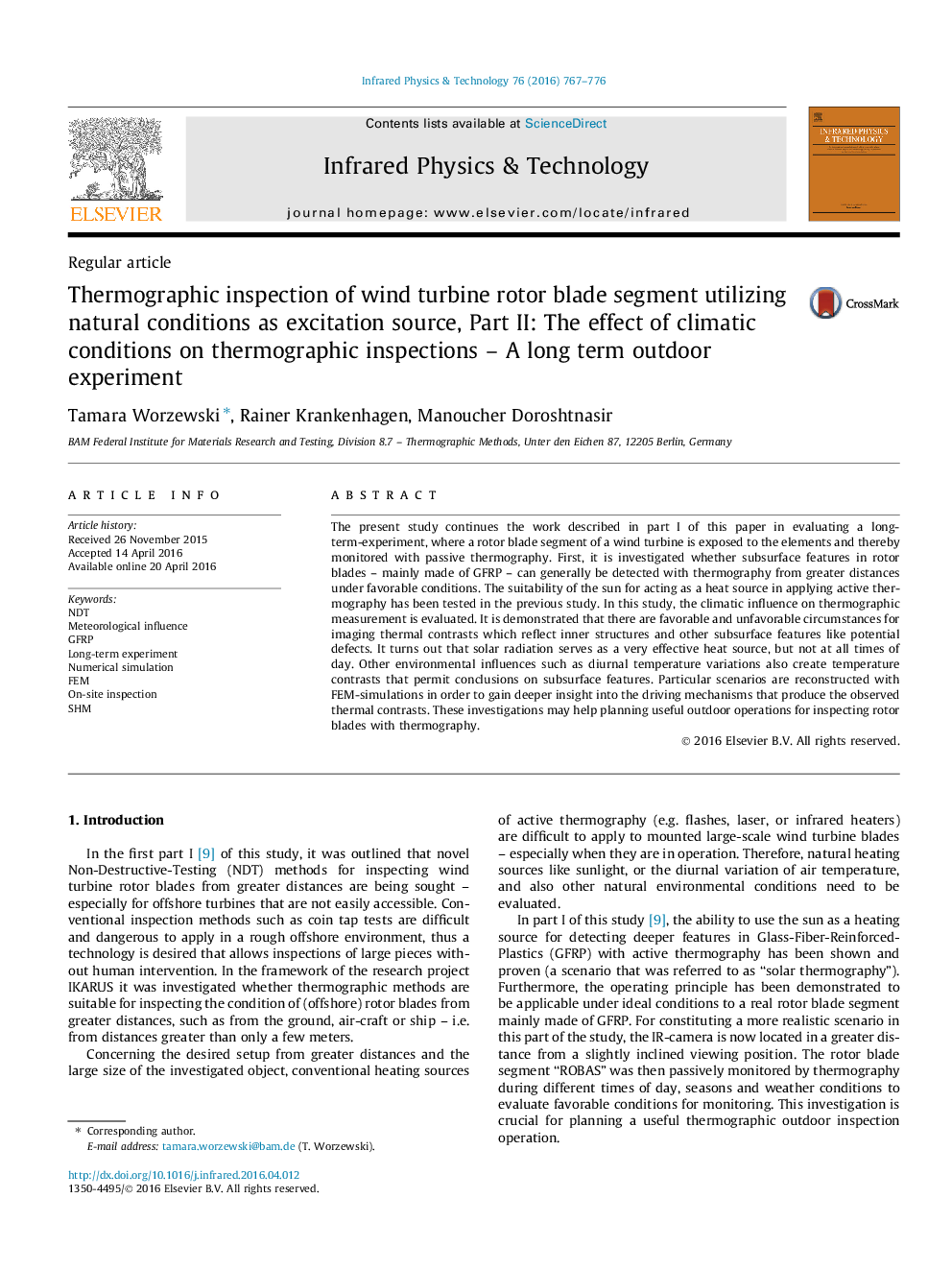| Article ID | Journal | Published Year | Pages | File Type |
|---|---|---|---|---|
| 8146669 | Infrared Physics & Technology | 2016 | 10 Pages |
Abstract
The present study continues the work described in part I of this paper in evaluating a long-term-experiment, where a rotor blade segment of a wind turbine is exposed to the elements and thereby monitored with passive thermography. First, it is investigated whether subsurface features in rotor blades - mainly made of GFRP - can generally be detected with thermography from greater distances under favorable conditions. The suitability of the sun for acting as a heat source in applying active thermography has been tested in the previous study. In this study, the climatic influence on thermographic measurement is evaluated. It is demonstrated that there are favorable and unfavorable circumstances for imaging thermal contrasts which reflect inner structures and other subsurface features like potential defects. It turns out that solar radiation serves as a very effective heat source, but not at all times of day. Other environmental influences such as diurnal temperature variations also create temperature contrasts that permit conclusions on subsurface features. Particular scenarios are reconstructed with FEM-simulations in order to gain deeper insight into the driving mechanisms that produce the observed thermal contrasts. These investigations may help planning useful outdoor operations for inspecting rotor blades with thermography.
Keywords
Related Topics
Physical Sciences and Engineering
Physics and Astronomy
Atomic and Molecular Physics, and Optics
Authors
Tamara Worzewski, Rainer Krankenhagen, Manoucher Doroshtnasir,
